Project goal and target audience
The StudyAssist app has been designed so that students can quickly identify their living expenses in relation to their upcoming studies. With information directly linked from universities, students can be confident in the data provided. The app will provide personalised suggestions on ways for students to make a successful start to studying along with ongoing projections of expenditure as their circumstances change and evolve.
The problem was too many students were opting to study without understanding the realities and costs associated. This oversight was leading to an increase in student drop rates, leading to lower confidence and mental health issues. The projected users for the StudyAssist app include all prospective and current students. These are users who are about to undertake study and want to understand the expenses involved, or current students who may find themselves in an expenditure situation they need assistance with to ensure they can continue their study journey.
A goal was set to design an app that was simple to navigate and provided not only the realities of living costs but assisted students with information and contacts to help them succeed with their study journey. Educating students on the reality of living expenses means they can make informed decisions for themselves, providing them with the best chance to account for unexpected situations.
Key challenges via research study
During the research stage, I obtained feedback from users that were turned into user personas. The research revealed users were very keen to study and make that a reality. The missing key was a lack of knowledge around what their current income was compared to the projected reality of study.
Interviews were conducted with target users and the findings from these were turned into actionable recommendations.
The primary pain points uncovered were
• Users wanted to understand the costs of living
• Finding employment to cover costs was potentially important
• The user base was potentially large and diverse
• Finding employment to cover costs was potentially important
• The user base was potentially large and diverse
Uncovering these details helped develop a much clearer and streamlined vision for the new StudyAssist app.
The Crazy 8's method was used to ideate possible screens for the app.
Wireframes
These wireframes were used during the user research stages of the project to show a basic framework for the user journey.


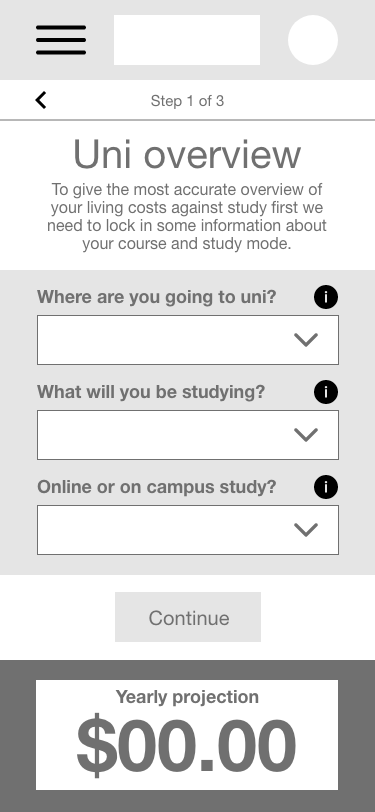



User testing results
Study type: Unmoderated usability study
Location: Brisbane, Australia. The StudyAssist app is related to university study so we wanted to conduct the study in a location that featured a high percentage of current or future students.
Date: Two weeks into the semester for first insights. Propose to run at future key dates due to the lengthy decision-making process of students. Dates TBA.
Participants: 20 participants were asked to use the StudyAssist app to gauge their living expenses and provide feedback on the app functionality and possible future inclusions that would be beneficial.
High-fidelity prototypes
The high-fidelity screenshots showcase the final user journey along with the responsive website version of the app.

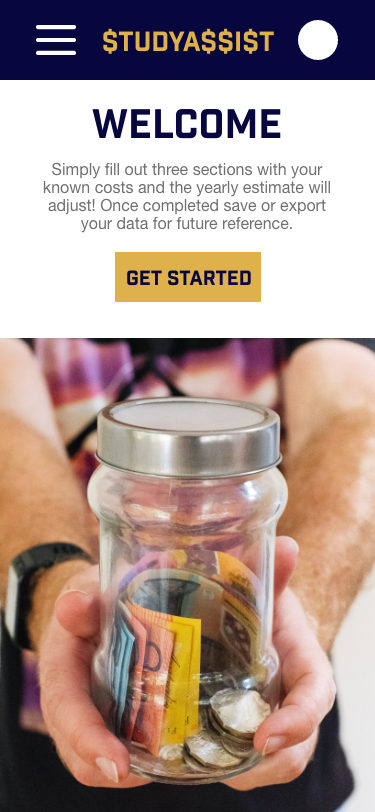

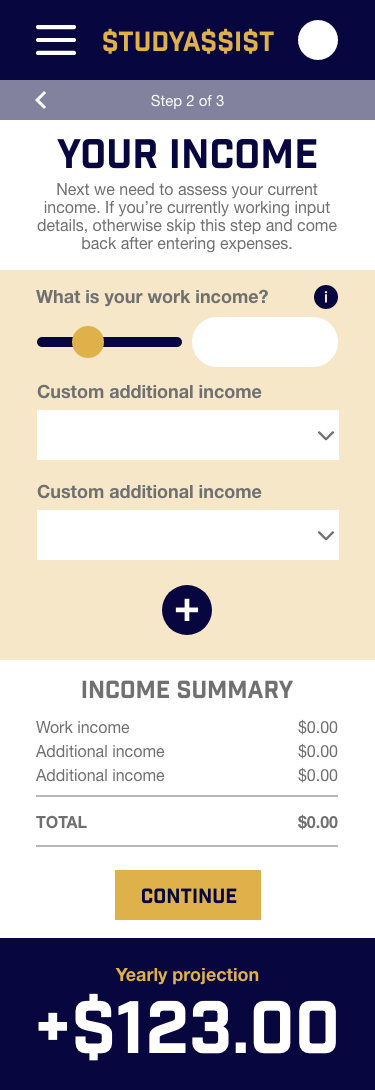


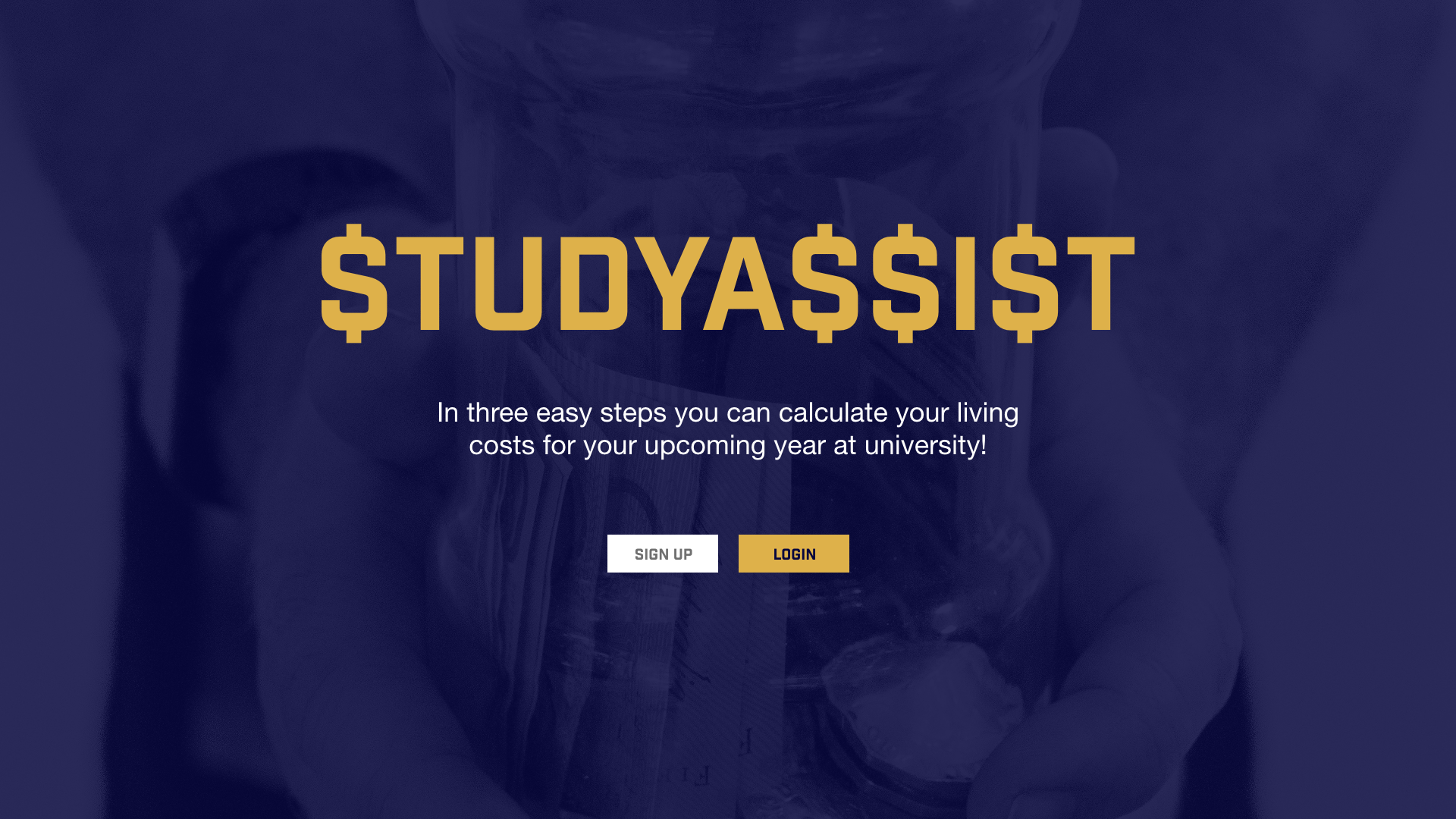
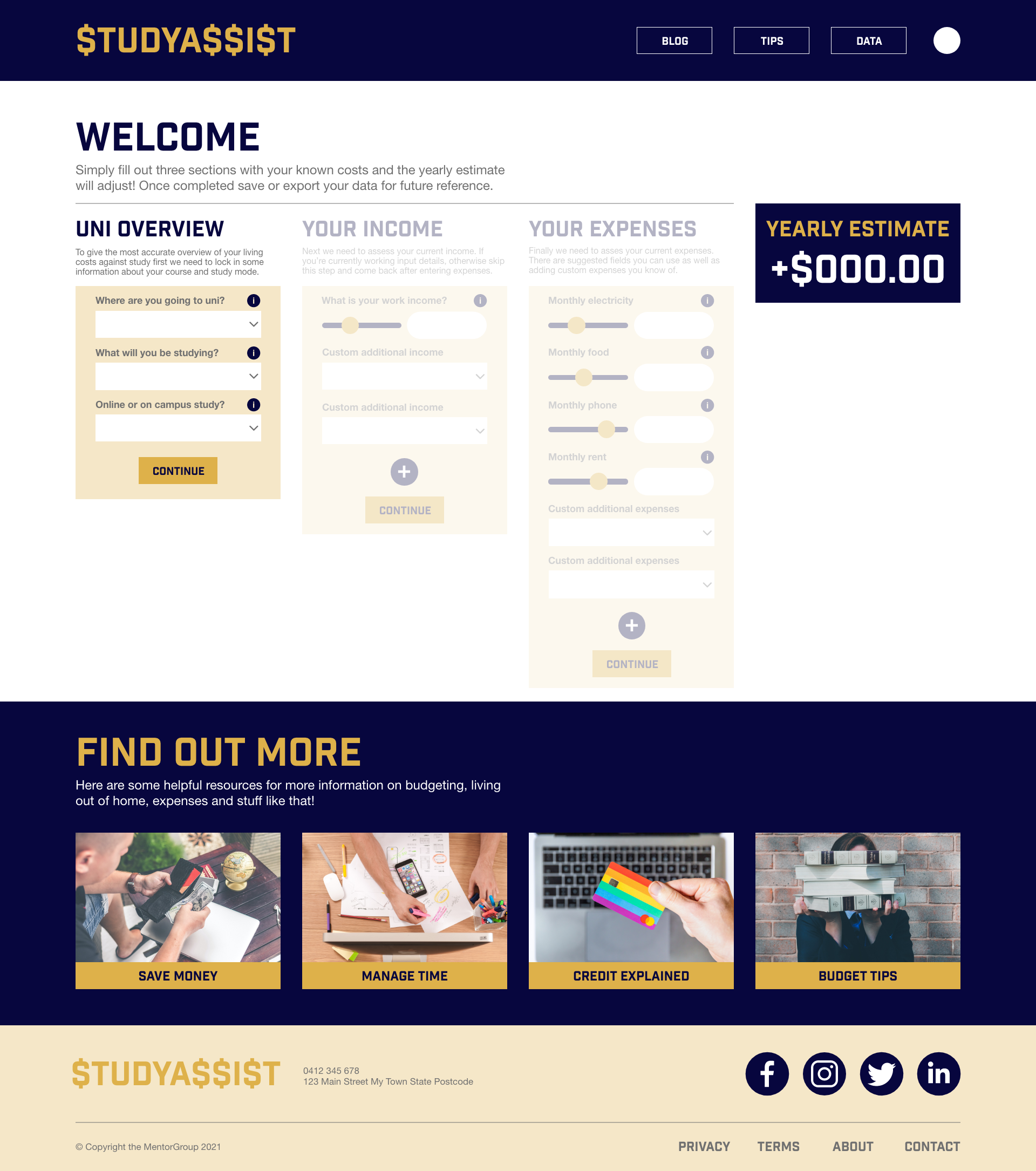
My role in the project
As a designer, I strive to meet customer needs through solution-based design. My role in this project as a UX designer was to deliver an app from concept to delivery. My responsibilities included: user research, wireframing, prototyping, usability testing, iteration, and the creation of a final high-fidelity prototype.
Conclusion
Designing the StudyAssist app was an interesting UX experience with social good in mind. Knowing that the app was going to assist students in their study journey made the project very fulfilling. The importance of user insights along the way cannot be understated and I look forward to future testing rounds at key points during the university study decision-making process to refine and beneficial content to future versions of the app.

